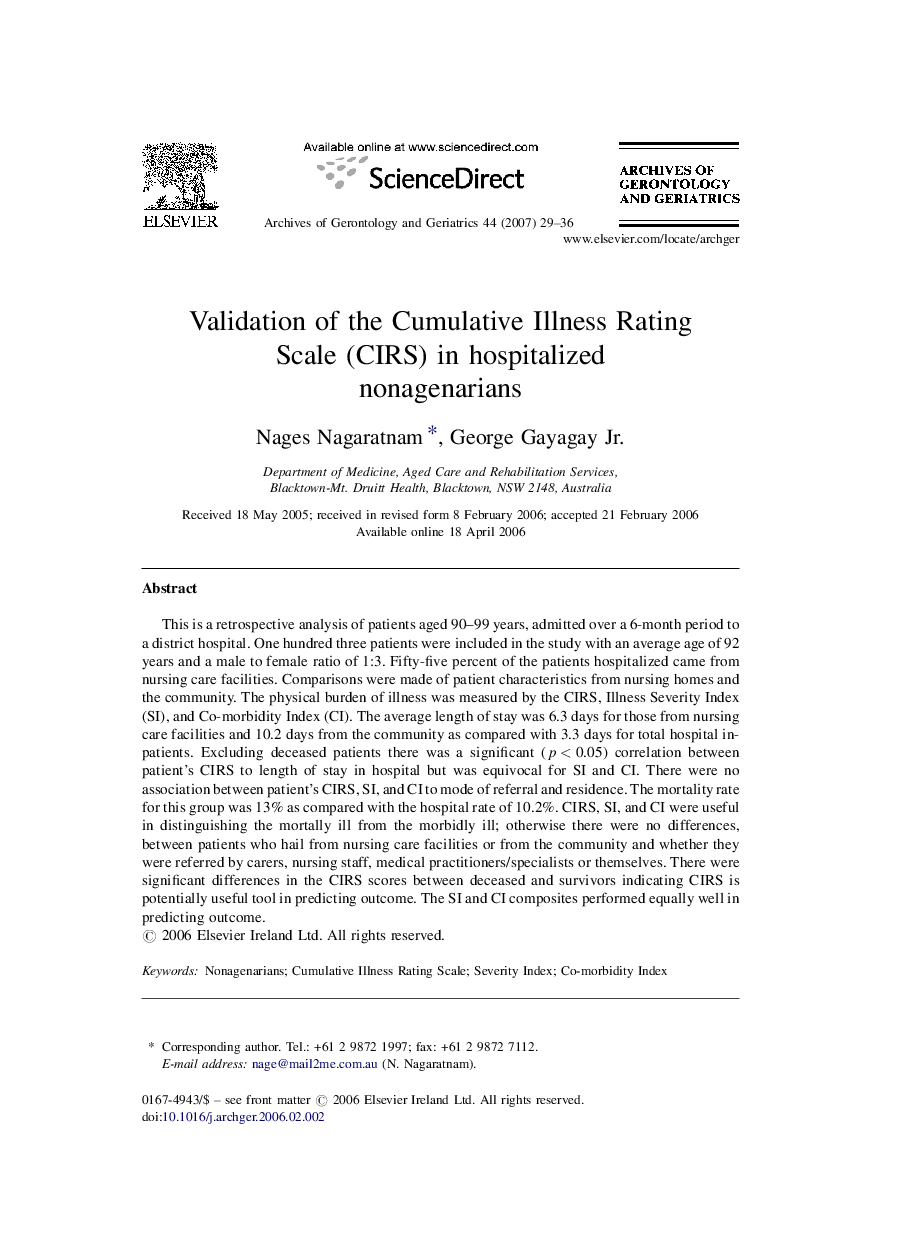| Article ID | Journal | Published Year | Pages | File Type |
|---|---|---|---|---|
| 1904232 | Archives of Gerontology and Geriatrics | 2007 | 8 Pages |
This is a retrospective analysis of patients aged 90–99 years, admitted over a 6-month period to a district hospital. One hundred three patients were included in the study with an average age of 92 years and a male to female ratio of 1:3. Fifty-five percent of the patients hospitalized came from nursing care facilities. Comparisons were made of patient characteristics from nursing homes and the community. The physical burden of illness was measured by the CIRS, Illness Severity Index (SI), and Co-morbidity Index (CI). The average length of stay was 6.3 days for those from nursing care facilities and 10.2 days from the community as compared with 3.3 days for total hospital in-patients. Excluding deceased patients there was a significant (p < 0.05) correlation between patient's CIRS to length of stay in hospital but was equivocal for SI and CI. There were no association between patient's CIRS, SI, and CI to mode of referral and residence. The mortality rate for this group was 13% as compared with the hospital rate of 10.2%. CIRS, SI, and CI were useful in distinguishing the mortally ill from the morbidly ill; otherwise there were no differences, between patients who hail from nursing care facilities or from the community and whether they were referred by carers, nursing staff, medical practitioners/specialists or themselves. There were significant differences in the CIRS scores between deceased and survivors indicating CIRS is potentially useful tool in predicting outcome. The SI and CI composites performed equally well in predicting outcome.
